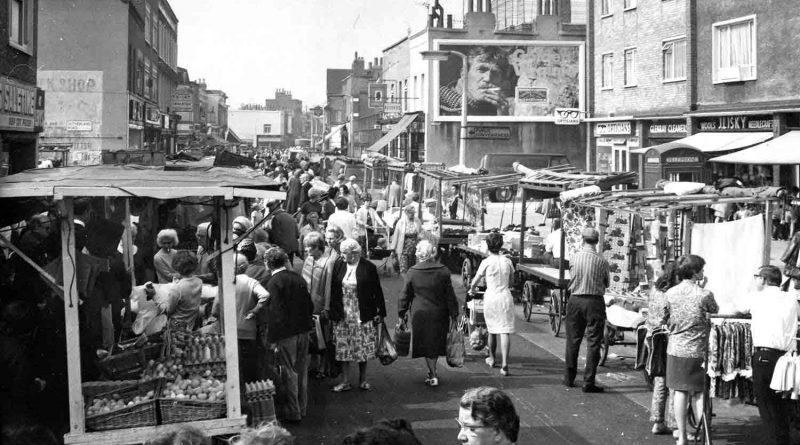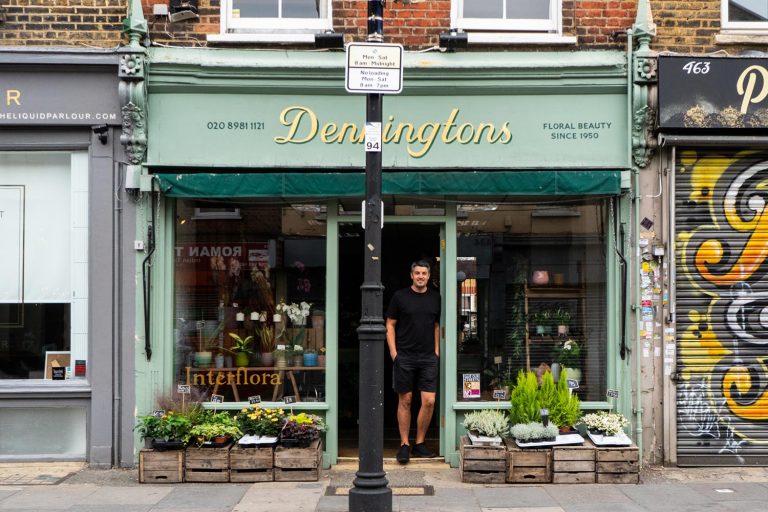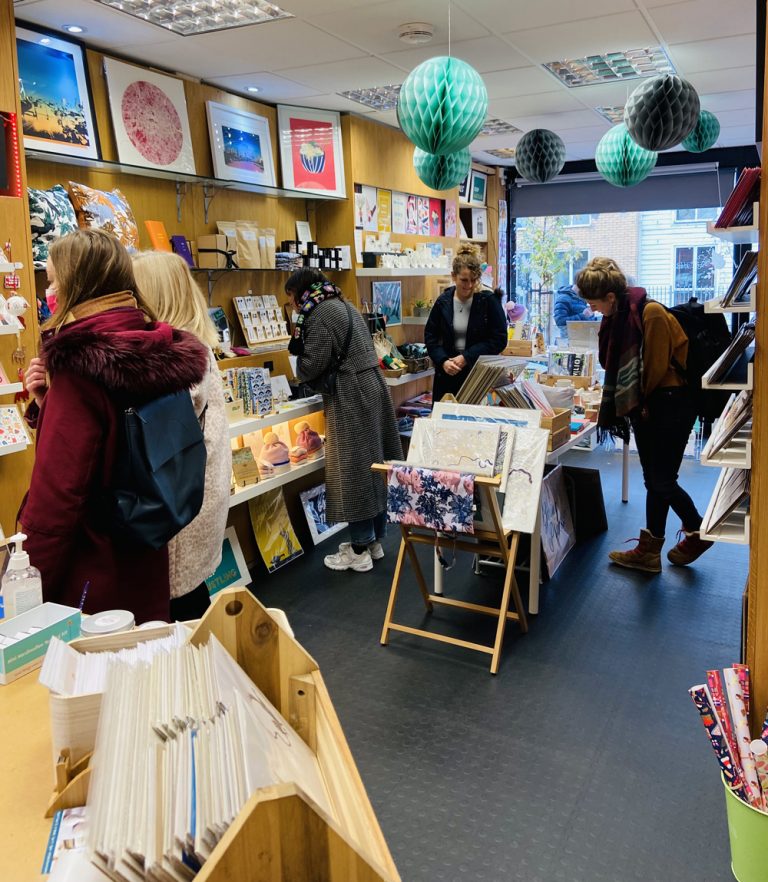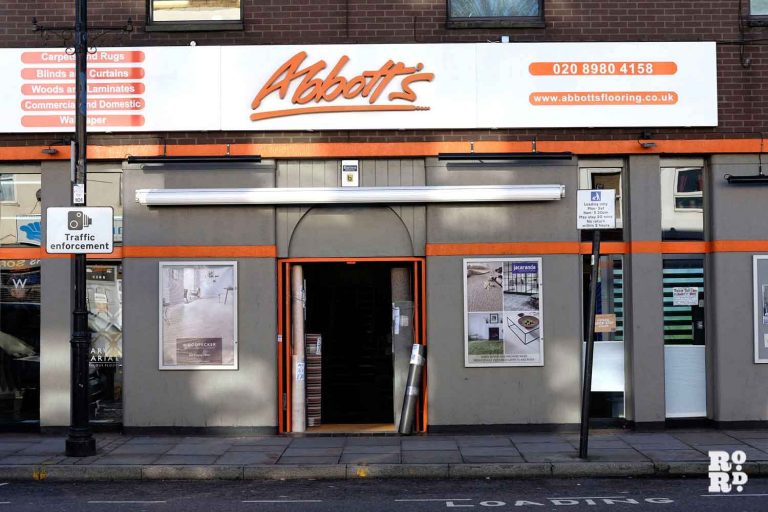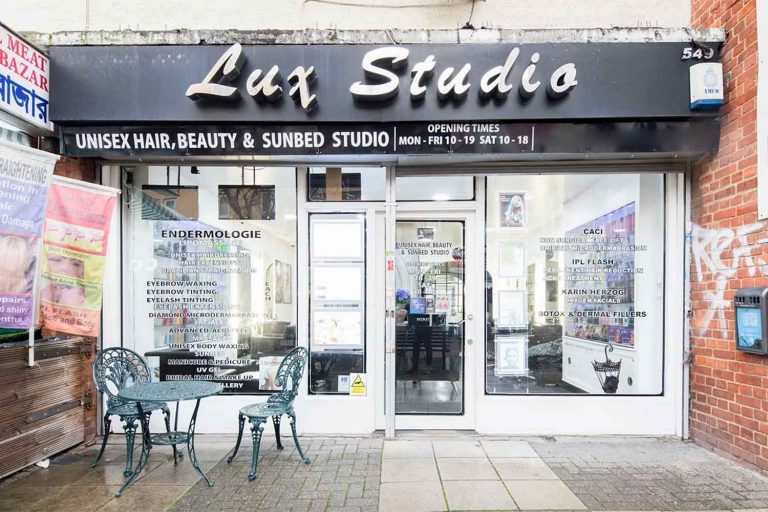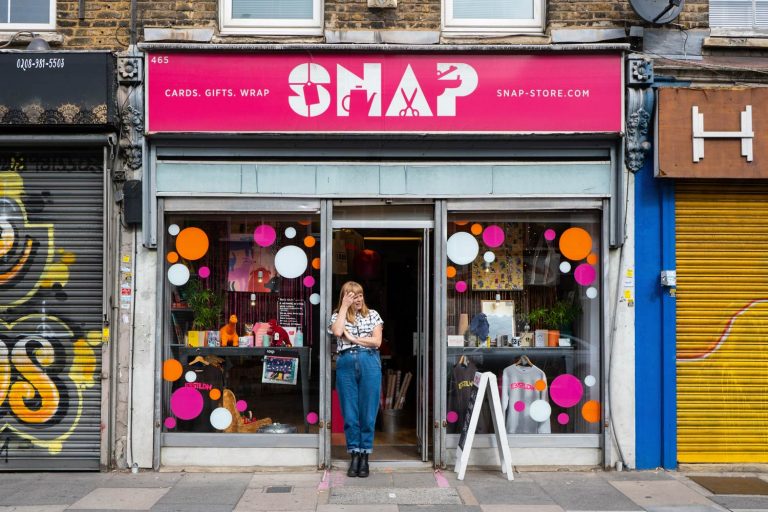The hidden history of Cabbage: the obscure fashion industry practice that helped shape Roman Road Market
Cabbage – the clothing, not the vegetable – at one time drew crowds to Roman Road Market, making it a fashion destination and shaping the market we remember: what is the history of this obscure practice?
Roman Road Market has remained the beating heart of Bow for over 150 years. Serving as a steadfast provider of anything from teabags to rolls of fabric to East Enders for generations – ‘going down the Roman’ is a tradition lasting as long as the market itself.
‘They always joked,’ says local historian Carolyn Clark, ‘you went down the market and you’d spend all day there on a Saturday, going from one end to the other – stopping somewhere and going for a drink, going into a pub, doing a bit more shopping.’
But it was the market’s reputation as a hub for sourcing women’s fashion at cheaper prices that really garnered its notoriety, especially from the 1960s to 1980s. Behind this is a centuries-old hidden practice that shares its name with a humble vegetable.
Cabbage, or sometimes becoming a verb ‘to cabbage’, or ‘cabbaging’, is the practice of making extra garments from offcuts or leftover fabric from cutting an item. The first use of the word has been traced as early as 1663 when it applied more to small-scale or bespoke tailoring. Around this time, connotations of theft started accompanying the term. Tailors were perceived as ‘skimming off the top’ from fabric that clients believed belonged to them, not the tailor.
This grey area of legality associated with the practice perhaps contributes to why cabbage is obscured in much official historiography, yet it has always run parallel to the legitimate clothing industry.
With the rise of mass production within fashion in the post-war period, the number of garments made boomed, and so did cabbage. The East End has always been a centre for the rag trade, but this became particularly acute during this period.
At one time, virtually everyone you met in the East End would’ve connected to the rag trade in some way as a seamstress, says Carolyn. Incredibly skilled seamstresses would work either in one of the many factories ‘down the lane’ (Petticoat Lane), or in one of the local factories in Bethnal Green or Mile End Road.
Because of the factories’ proximity to Roman Road Market, links between factory workers and market traders abounded – the two were deeply intertwined. So clothes made from cabbage eventually found its way from the factories and onto the market stalls. This both made extra cash for factory workers and meant the Roman Road became renowned as a place to get cabbage.
Carolyn fondly recalls some of her own cabbage treasures acquired on the Roman.
‘I can remember coming down here in the 70s, and at that time Wallis clothes were fashionable. I remember being able to get Wallis clothes down the Roman Road for a fraction of what you paid in the shops.
‘There was also Dorothy Perkins, remember, Dotty Perks as we used to call it, a whole number of high street shops. Oxford Street shops, you could get down the Roman Road, cheap. My own memories of it was that it was wonderful.’
The rag trade networks and community fostered by the market were essential in keeping cabbaging as an essential side economy alive during this time.
‘You had so much better networks then,’ says Carolyn, describing the nurturing force of the market.
‘It was a social centre as well as a shopping centre, the street was, the market was – it was a destination for that. It was part of the community, and that’s what community does.’
While cabbage’s exact place of origin is uncertain, it has certainly been adopted by the East End as a practice that perfectly encapsulates the Cockney spirit.
Carolyn sees cabbaging as representing more than clothes. ‘What I love’, she smiles, ‘is the local initiative of people to sort of duck and dive to make a little bit on the side. Because it was never an industry that was wealthy. You certainly didn’t earn a lot as a seamstress, and home work was terribly paid.’
You could even say that this reflects the resilient spirit of the market itself. When Roman Road Market first started in 1843, it was illegal but ‘withstood several attempts to close it down.’
And here it still stands today, in its latest form in a lifetime of shape-shifting. Roman Road Market has always reflected changing fashions as they come and go, and that extends to the working of the fashion industry itself.
In recent years, developments in fashion production technology and the outsourcing of garment factory work overseas have reduced the opportunities for cabbaging in the East End. In turn, cabbage has become less of a feature of the market. Carolyn estimates that the amount of cabbage seen on the market started to tail off after the 1980s.
Today, the cheap clothes you’ll find from the likes of Marks and Spencer’s and French Connection on the Roman are more likely to be imported overruns, surplus stock or online order returns, all of which would otherwise go to landfill. Perhaps Roman Road Market’s latest iteration, somewhat unexpectedly, is being a crucial player in the fashion sustainability cycle.
If you liked reading this you may also enjoy The history of Roman Road Market.

